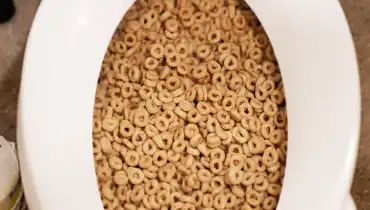Is it Feasible to Flush Food in the Toilet?
Is it Feasible to Flush Food in the Toilet?
Blog Article
We have found this great article pertaining to Is it safe to flush food (especially rice) down the toilet? below on the internet and thought it made perfect sense to discuss it with you on this page.

Introduction
Lots of people are commonly confronted with the problem of what to do with food waste, particularly when it concerns leftovers or scraps. One typical question that develops is whether it's okay to purge food down the toilet. In this write-up, we'll look into the reasons why people may consider purging food, the repercussions of doing so, and alternative approaches for correct disposal.
Reasons individuals might take into consideration purging food
Absence of understanding
Some people might not be aware of the potential injury caused by flushing food down the toilet. They might erroneously think that it's a safe practice.
Benefit
Purging food down the bathroom may appear like a quick and easy option to dealing with unwanted scraps, specifically when there's no close-by garbage can readily available.
Laziness
In some cases, individuals might merely pick to flush food out of sheer negligence, without considering the effects of their actions.
Effects of flushing food down the toilet
Environmental influence
Food waste that ends up in rivers can contribute to air pollution and harm water environments. Furthermore, the water made use of to purge food can stress water resources.
Pipes concerns
Purging food can cause clogged up pipelines and drains pipes, causing costly pipes repair work and aggravations.
Types of food that ought to not be flushed
Fibrous foods
Foods with coarse textures such as celery or corn husks can obtain entangled in pipes and cause clogs.
Starchy foods
Starchy foods like pasta and rice can take in water and swell, leading to blockages in pipelines.
Oils and fats
Greasy foods like bacon or food preparation oils ought to never ever be flushed down the commode as they can solidify and create clogs.
Proper disposal approaches for food waste
Using a garbage disposal
For homes furnished with garbage disposals, food scraps can be ground up and purged with the plumbing system. Nonetheless, not all foods are suitable for disposal in this way.
Recycling
Certain food packaging products can be recycled, decreasing waste and lessening environmental influence.
Composting
Composting is an eco-friendly means to dispose of food waste. Organic materials can be composted and used to enhance soil for gardening.
The significance of proper waste monitoring
Decreasing ecological damage
Appropriate waste administration techniques, such as composting and recycling, aid lessen air pollution and preserve natural resources for future generations.
Safeguarding pipes systems
By preventing the technique of flushing food down the commode, homeowners can stop expensive pipes repair services and maintain the stability of their pipes systems.
Verdict
Finally, while it may be appealing to flush food down the bathroom for convenience, it is essential to understand the possible consequences of this action. By embracing appropriate waste monitoring methods and disposing of food waste sensibly, individuals can contribute to healthier pipes systems and a cleaner environment for all.
FLUSH FOOD DOWN THE TOILET?
FLUSHING FOOD CAN CAUSE BLOCKED DRAINS IN YOUR HOME
All of the plumbing fixtures in your home are connected to the same sewer pipe outside of your home. This outdoor sewer pipe is responsible for transporting all the wastewater from your home to the Council sewer mains. Even small pieces of food that go down the kitchen sink can cause problems for your sewer. It should therefore be obvious that flushing larger bits of food, such as meat, risks a clog in either the toilet itself or the sewer pipes. Flushing greasy food is even more problematic because oil coagulates when it cools, coating the interior lining of your pipes.
THE TOILET IS NOT A BIN
Food isn’t the only thing that people shouldn’t be flushing down the toilet. People use the toilet to dispose of all kinds of things such as tampons, makeup wipes, dental floss, kitty litter and even underwear. Water goes to great lengths to educate residents about the high costs and stress placed on wastewater treatment systems simply from people flushing the wrong stuff down the toilet. It costs taxpayers millions of dollars each year, and homeowners thousands in blocked drain repairs.
FLUSHING FOOD IS A WASTE OF WATER
Flushing food is a waste of our most precious resource - water. In June this year Level 1 water restrictions were introduced to protect water supply from drought conditions. Much of New South Wales continues to be affected by prolonged drought with recent figures revealing up to 97 per cent of the state remains in drought. Depending on whether you have a single or dual flush toilet, every single flush uses between five and 11 litres of water. In the current climate this is a huge amount of water to be wasting on flushing food that should be placed in the bin (or better yet, the compost).
https://www.jabplumbingsolutions.com.au/blog/can-you-flush-food-down-the-toilet

I discovered that review on Think Twice Before Flushing Food Down Your Toilet when doing a search on the internet. Liked our post? Please share it. Let another person discover it. Thank you for your time spent reading it.
Information Report this page